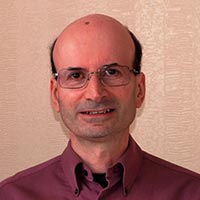PRESS AND NEWS CENTER
HDR Offers Satellite Operators Opportunities to Introduce New Visual Experiences to Subscribers

- Technicolor and Philips are collaborating to enable broadcasters to confidently capture, transmit, and deliver HDR and standard definition video content in a single stream.
- High dynamic range (HDR) technology will enable satellite broadcasters to deliver greatly improved video quality to viewers that will be especially important for premium sports content.
- There are a few hurdles to overcome for satellite operators to fully understand and embrace HDR, including the fact that standards for this technology across the delivery chain are not fully settled, and multiple flavors of HDR are likely to coexist for the foreseeable future.
 Richard Cheeseman, Director Product Management, Satellite Set-Top Box at Technicolor Connected Home
Richard Cheeseman, Director Product Management, Satellite Set-Top Box at Technicolor Connected HomeHDR video technology will enable satellite broadcasters to deliver higher quality video to end users, but there are still a few bumps in the road. The Future Trust caught up with Richard Cheeseman, Director Product Management, Satellite Set-Top Box at Technicolor Connected Home, to learn what these are and hear how Technicolor and Philips are working together to overcome some of them.
Richard, what are you seeing in terms of the attitude towards HDR in the satellite industry? How is it being perceived in terms of delivering value to customers and subscribers of satellite services?
Cheeseman: Satellite service providers generally have a strong reputation for delivering high picture quality. They also have rights to major sports events with dedicated channels. HDR will enable them to take a major leap forward in picture quality, providing a fully immersive experience for the viewer, specially adapted to sports content, as well as to the high-end market leadership position of these operators.
The combination of ultra-high-definition (UHD), 4K, with HDR will enable satellite providers to achieve the goal of delivering not just more pixels, but better pixels.
Is HDR seen strategically as a true differentiator? Has it achieved the status where, if you support HDR, you have a competitive edge, or has it already evolved into becoming a requirement for the satellite community?
Cheeseman: It is becoming a requirement. Certainly there was a belief that UHD without HDR would be adequate, but now that HDR is ready to be launched, satellite operators believe it’s important to take that extra step, to have something that is really visible to the end user - that positions them as delivering high-end, next-generation picture quality.
As you interact with your customers and partners in the satellite industry, what can you tell me about HDR adoption rates? Does the desire and the willingness to invest in embracing HDR and bringing the technology to market truly exist on a reasonable timeline?
Cheeseman: Truly broad HDR adoption is probably about two years away because there are investments to be made in cameras, in the broadcast chain, and also in set-top boxes. Those things can’t be done overnight. Also, operators need to be sure the standards are clear. These things are all coming together now and I think the next two years is a reasonable time scale for many satellite operators to start adopting HDR universally.
With regards to standards and conventions, is there a sense in the satellite industry that interoperability issues are being resolved and devices throughout the ecosystem will be able to work together to deliver the kind of experiences consumers want?
Cheeseman: One of the key points has been the availability of televisions and that is happening now. We see a wide range of TVs being available with the new version of HDMI that supports HDR. And, of course, operators need to be convinced that HDR is what they need to take the next step in picture quality.
Another interesting point is that we originally thought HDR would always be combined with UHD (4K), but that is not necessarily the case. We are seeing interest in HDR in HD (2K) format as well. This will enable operators to deliver image improvements that are very visible to the end user without going all the way up to UHD resolution.
So what do you see as the key next steps that need to be taken to remove barriers that stand in the way of the satellite community adopting HDR?
Cheeseman: The most important requirement is a solution for HDR delivery that does not need multiple new broadcast streams over the satellite medium.
We can’t expect service providers to have one UHD standard dynamic range (SDR) broadcast and one UHD HDR broadcast. There really will need to be one stream that can address both SDR and HDR, and this stream also needs to be produced with one single capture of a sporting event.
Beyond those requirements the right products at affordable prices need to be available throughout the value chain and these need to be based on clear definitions of specifications and standards -- right up to set-top boxes for the end user.
Can you explain how Philips and Technicolor are working together on HDR for the satellite industry?
Cheeseman: Philips and Technicolor have worked together to come up with a HDR distribution system that allows one single broadcast to be made that delivers the best possible quality to both HDR and SDR receivers. This is necessary so service providers don’t have to rely on best effort conversion processes in set-top boxes or TV sets. They can be sure all their viewers will get the controlled quality that is expected, without them having the cost and complexity of delivering multiple broadcast streams.